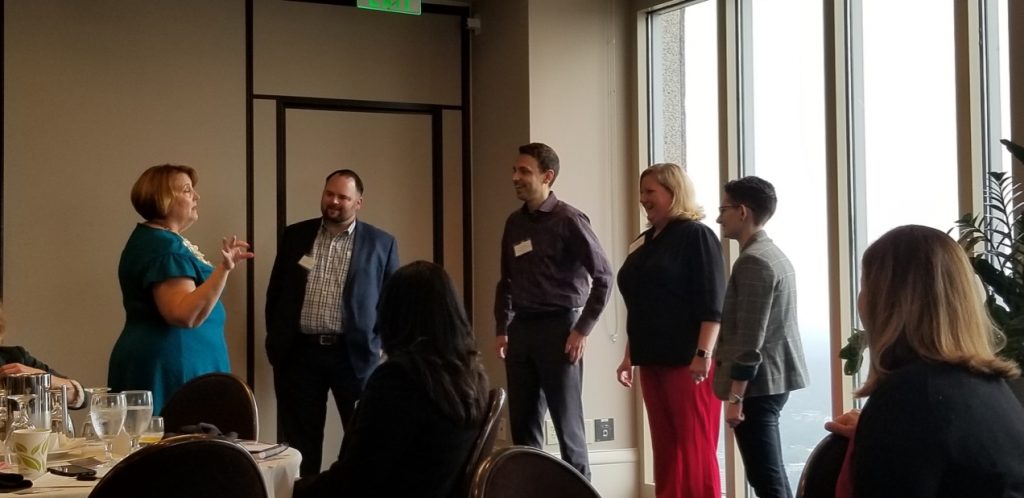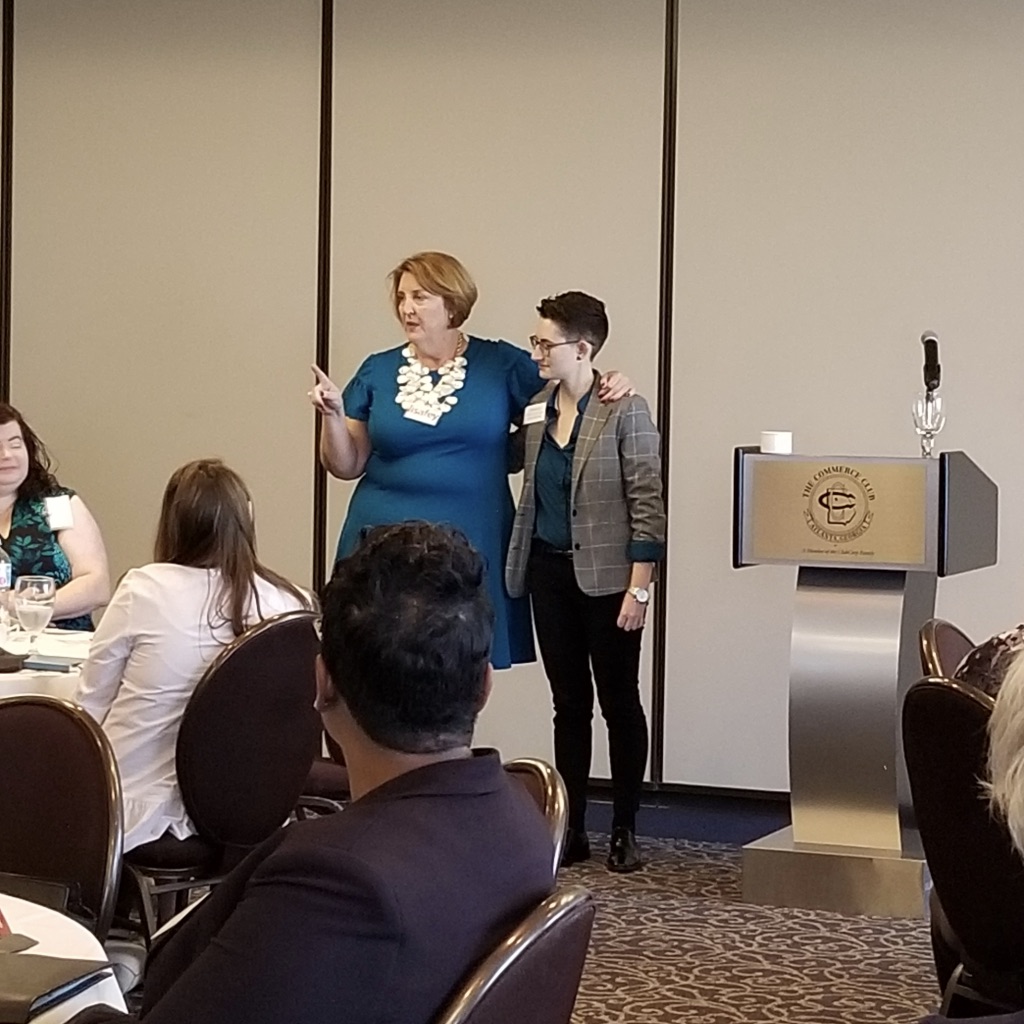
In September, I attended one of Turknett Leadership Group‘s Women in Leadership (WIL) Seminars with Agnes Scott College. The WIL Seminar series is a monthly small group forum that has met for over 16 years. The program features accomplished women speakers who share their leadership experiences through lectures.
During the event,”How to Spur Creativity, Teamwork and Innovation in Your Organization,” speaker Lisa Fey, led a series of interactive activities designed to build collaboration and problem-solving skills. Fey is the president of Lisa Fey Speaks LLC and a former Sales & Marketing Leader at The Coca-Cola Company.

Inspiration In Improv
In her talk and corresponding activities, Fey often drew upon improv theories. She explained this inspiration, arguing that improv simulates the conditions of the contemporary workplace. Most of the time, we do not have the luxury of a rehearsal in the workplace and instead must be adaptable. Fey postulated that improv simulates this everyday time constraint and helps us become more creative thinkers in a crunch. Most importantly, she argues, improv teaches people how to listen and collaborate in group settings. Both the aforementioned pressure to generate creative solutions in a designated time and the pressure to perform collaboratively with a group become motifs in Fey’s talk that permeated each activity.
Using "And" Instead of "But"

Activity Premise
I volunteered to participated in Fey’s first activity “Yes—And.” During this activity, the other three participants and I had to plan an imaginary event together. Each participant had to generate an idea in response to the idea of the person who spoke prior to them using “Yes—and” as a transition phrase.
For example, someone might say: “Yes— And we should serve cupcakes at the party.” Then, the next person might say: “Yes— And they should be blue to match the theme.” The activity was fast paced, with each idea coming right after another.
Connections to Improv
The activity built upon the two themes of improv mentioned earlier: working under pressure and working collaboratively. The fast pace of the activity applied pressure for each participant to come up with the next line of the plan in front of a room full of people. Despite this constraint, each participant was able to generate creative, innovative ideas. Additionally, we all also had to work collaboratively to build off the idea that the previous person had said. In order to be successful, we had to listen well to understand the idea before adding to it. I observed first-hand how great communication starts with great listening. This activity illustrated both themes and how improv could help us function better in time crunches where we had to collaborate.
Opening Dialogue
By using the phrase “Yes—And” in our group activity, we created space for possibility and set the stage for innovation. Using this affirming and open-ended phrase showed that there were no wrong answers and created momentum for generating more ideas. The activity made me realize that just as there are phrases that open dialogue, there are phrases to shut it down. One such example is “Yes—But.” Where “Yes—And” created space for innovation, “Yes—But” would have halted creativity. Phrases like “Yes—But” created a standard of censorship and begin to close off pathways for exploration. This activity emphasized the importance of the language we use to brainstorm creative solutions.
The Power of Positive Affirmation

For the next activity, Fey asked for a a singular participant and I volunteered. After asking me to stand at the front of the room, she instructed the audience to join her in giving me a standing ovation. She asked me how it felt and I replied that it felt good. She used my response to illustrate how positive affirmation holds the power to value and motivate people. Fey argued that we must recognize supervisors, employees, and coworkers with this same positive affirmation in order to give them the recognition they deserve.
Receiving a Standing Ovation
Application In My Work
Immediately after this event I started using the “Yes—And” linguistic strategy in my everyday work. I found that it was really effective in collaborative projects with coworkers and classmates, but more interestingly, it was also helpful to use with tutoring clients as well as self-reflexively.
When I used the “Yes—And” technique with clients I helped tutees in the Center for Writing and Speaking to flesh out their ideas. By using “Yes—And” strategy, I was able to assist writers and presenters with building momentum in their brainstorming, which usually led them to produce a greater number of creative ideas. Additionally, this strategy helped me to assist writers and presenters in taking their ideas further by teaching them how to turn off their own internal editors. By using the “Yes—And” method I was able to help clients take generate new ideas and take their innovation further.
Once I started applying this linguistic technique with tutees, I tried to apply it to how I thought about myself. I used it as a thought prompting tool for everything from generating new ideas for written content to maintaining my creative momentum on long-term projects to turning off my own internal editor to overcome creative obstacles.
Leave a Reply